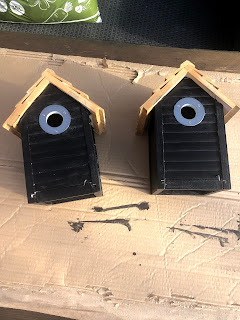Beetles and (kidney) stones
The winter months become a time to reflect on expectations and reality. What has worked, what has over-achieved, and what has under-performed.
As I take it all in I realise how far we have come this year, despite the barriers I've been faced with over the last few months. With the leaves cleared, what remains is a scattering of evergreen shrubs, a selection of perennial stems, an icy-cold pond and a layer of half-rotted bark-mulch. The attractive seed-heads are a reminder of the lush plants that once filled the space. Colour and scent a distant memory, the gold dust within their long-since fallen petals, a reminder of the lively pollination activity that took place.
For me, this is a time when the bare bones are plain to see and it becomes the ideal opportunity to plan next years transformation.
At some point I would like to create a green and white border where every inflorescence is pure white, the foliage striking in form and bright green. I would also like to place a seated arbour near the pond as it's my favourite place to relax. Equally important on my wish list is a cut-flower area where I can fill our home and those of our loved ones with fresh flora. All of this requires careful consideration, wider reading and research. This is a process I am familiar with and that bestows on me pleasure by the bucketload.
This time of year naturally draws my attention to our wildlife offer. The bundles of twigs at the back of the flower borders, the upturned terracotta plant pots strategically placed, the solitary bee boxes, the mounds of undisturbed leaf-litter, the turf stack, the pile of bricks and stones, the rotting log-pile where beetles and woodlice frequent and the wildlife pond, all doing their thing to promote and protect diversity.
We are told to look after garden birds increasingly over the winter months by providing fat balls and other energy promoting food. The birds are more visible during these months as the trees lack much of the summer leaf protection. Blackbirds, Blue-tits, Coal-tits, Dunnocks, Goldfinches Great-tits and Robins are our most frequent diners. We are clearly doing something right despite our lazy feline friend Buffy, she is often seen guarding the bird table.
In addition to the covered feeding station we have several nesting boxes, bird feeders, trees that bear fruit at different times of the year, rose hips, berries, a pond, a water bath and plants that attract aphids, that ladybird larvae feast on, that in-turn provide food for some garden birds. Yet, I am always on the look-out for ways in which we can improve the space and do things better.
2019 will be the year that we stop using pesticides and let nature take its course. It is all too easy to grab a pesticide and spray a tree when its covered in aphids but this is at the expense of Lacewing larvae and Hoverfly larvae. I may even introduce some nematodes to manage the rose sawfly and some of the slug population in the raised veg border, and around the hostas, these are my two biggest bugbears. Most other issues I can live with, even Vine weevil and Lily beetle. This change in practice will promote greater diversity in the food-chain. I'm hoping we will eventually attract hedgehogs to our space too especially as they are in steep decline.
The joy of planning the gardens next incarnation begins!








Comments